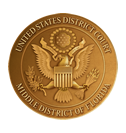(a) LEAD COUNSEL. The first paper filed on behalf of a party must designate only one "lead counsel" who — unless the party changes the designation — remains lead counsel throughout the action.
(b) APPEARANCE.
(1) A lawyer's pleading, motion, or other paper serves as that lawyer's appearance in an action.
(2) A party, other than a natural person, can appear through the lawyer only.
(3) If a lawyer represents a person in an action, the person can appear through the lawyer only.
(c) WITHDRAWAL. If a lawyer appears, the lawyer cannot without leave of court abandon, or withdraw from, the action.
(1) To withdraw, a lawyer:
(A) must notify each affected client fourteen days before moving to withdraw unless the client consents to withdrawal, and
(B) must file a motion to withdraw that includes:
(i) a certificate that the lawyer has provided fourteen days' notice to the client or that the client consents to withdrawal and
(ii) if withdrawal will result in a person proceeding pro se, the person's mailing address, email address, and telephone number.
(2) The withdrawing lawyer — not the lawyer's present or former firm or another lawyer — must move to withdraw unless unable because of an emergency, disability, or death.
(3) If withdrawal might cause the continuance of a trial, a lawyer cannot withdraw absent a compelling ethical problem, emergency, disability, or death.
(4) A party that discharges a lawyer must obtain substitute counsel in time to comply with the deadlines. A person no longer represented by counsel must comply with the rules and comply with the deadlines.
(d) LAW FIRMS. A lawyer changing law firms but remaining as the lawyer in an action need not file a motion but must change the lawyer's contact information.
